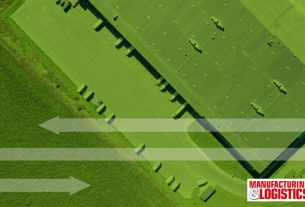By Tim Bruun, Head of Customer Management – Retail & FMCG at Transporeon.
Transporting day-to-day goods such as food and toiletries has always come with challenges and pressures and having items that are daily necessities for millions of people around the world and must be available at all times is a given. I’m sure we all remember the drama when toilet roll shortages swept across Europe during the height of the pandemic.
However, when analysing the current state of the market, we can see two distinct trends. On the one hand, the market is softening and the capacity crunch is reducing after tightening in 2021 and the first half of 2022. Indeed, the future prognosis for the global FMCG market is generally positive. It is predicted to grow by €284.4 billion by 2026, largely due to the growing preference for eCommerce online distribution.
However, at the same time, impending recession and rising inflation is causing production demand to drop and prices to rise. Consumer goods companies are now dealing with billions in additional costs, thanks to rising prices for raw materials and transportation. These are generally higher for FMCG products, due to specific temperature and humidity requirements.
This is likely to continue throughout 2023. But, the big question is, what does it all mean for businesses in terms of driving future growth and success?
In the balance
With these trends in mind, FMCG businesses are facing a delicate balancing act of keeping costs down while meeting the needs of increasingly demanding consumers who have considerable purchasing power. An empty shelf isn’t just a lost sale for someone – it’s a reason for customers to switch to another brand.
Those involved in FMCG supply chains are also looking to drive as much value as possible from their operations yet ensure resilience against disruptions that, according to McKinsey, are becoming ever more frequent. How well FMCG suppliers achieve this balance will determine their success in 2023 and beyond.
Achieving an equilibrium between value and resilience starts with digitisation. The truth is that FMCG logistics aren’t as digitised as they should be. They still rely on plenty of paper-based processes that cause inefficiencies. The good news is there’s a drive within the industry to replace them with e-documents and digital processes.
Additional value can also be realised by implementing automation to save time on elements such as time slot and yard management processes. As a result, FMCG businesses will be able to streamline and enhance their tactical activities, which is crucial since millions of people worldwide depend on FMCG supply chains every day, as well as the time-sensitive storage and consumption windows for many perishable products – some of which are only available for a short period of time.
Embracing a digital-first mindset will empower FMCG businesses to deliver the speed and convenience that consumers are looking for, while optimising their operations and building greater profit margins. At the same time, it will provide resilience by making it easier to adapt to disruption. A lack of resilience can be fatal for modern FMCG brands, but achieving it requires businesses to think beyond basic automation by focusing on data and relationships.
Realising FMCG 2.0
The only way FMCG businesses can truly ensure resilience is by enhancing their ability to execute on market and operational insights. This is what will enable them to react to fluctuating customer demands and adapt to unforeseen events such as border closures or dangerous weather conditions. With the right data at their fingertips, businesses will be able to make more data informed decisions in a timely fashion – relying on actionable insights rather than gut feel – and build optionality into their operations.
At the same time, tapping into data is what will provide balance in terms of optimising their operations. Consider a day to day product such as toilet rolls which is transported from warehouses to multiple countries and hundreds – if not thousands – of locations within those countries on a near-daily basis. These transports may have to cross international borders, adapt their routes due to traffic jams or road closures, and sync up with countless other transports. The logistics involved are staggering, but data can act as the common thread that ties such a complex operation together.
Conclusion
In order to succeed, businesses within the FMCG supply chain must be prepared to build deeper relationships and drive collaboration with other industry stakeholders within one connected network. They must work together to realise the economic gains available. For example, there’s no need for a truck to drive hundreds of empty miles to pick up a load when another may be unloading nearby.
A deeper collaboration through a common platform can provide the balance that is essential – whether that’s by increasing resiliency, providing wider access to market data, reducing costs, or enabling more sustainable supply chains.
Ultimately, the goal of any FMCG stakeholder is to ensure that products make it to customers on time, every time. The key is to maintain the flow of goods, no matter what challenges come their way. And, like any ecosystem, the world of FMCG transportation is all about balance. Taking a digital-first approach driven by data and relationships will help FMCG businesses balance their operations in a way that drives sustained success.



